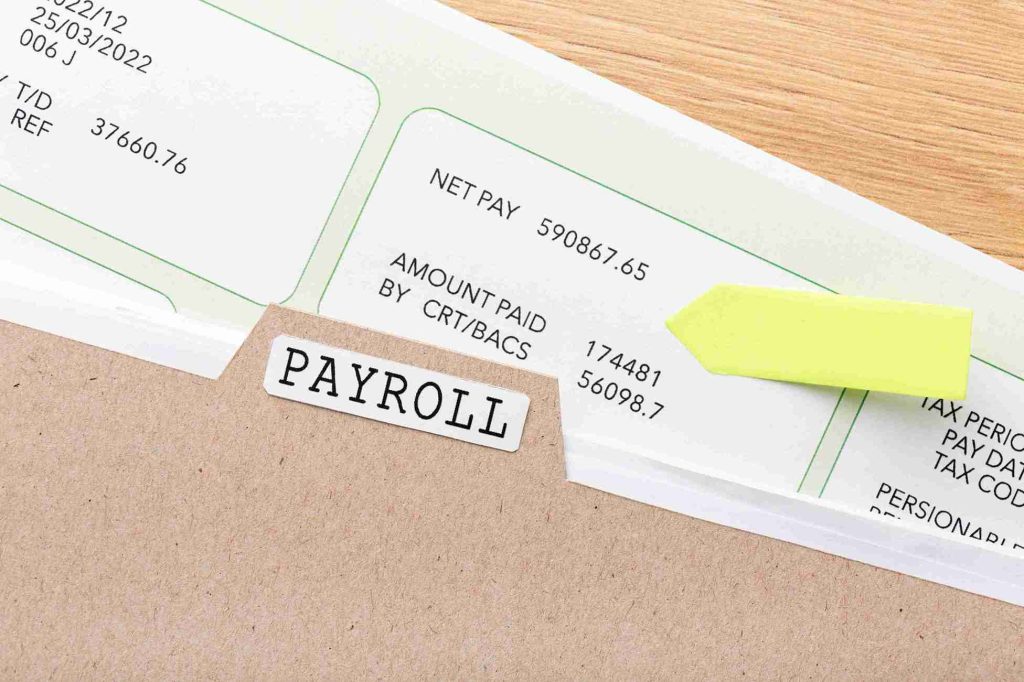Starting a business comes with numerous responsibilities, and how to start payroll for a small business is one of the crucial tasks that owners must understand early.
Proper payroll management ensures that employees are paid accurately and on time, avoids legal penalties, and maintains a positive work environment. This article will provide a step-by-step approach for small business owners to set up and manage payroll effectively.
What is Payroll?

Payroll is the process through which a business compensates its employees for their work. This includes not only salaries and wages but also additional forms of compensation such as bonuses, commissions, and overtime pay.
Payroll also involves managing deductions for taxes, benefits, and retirement contributions. For small businesses, payroll is often seen as a complex and time-consuming task, but understanding its fundamentals is crucial for smooth operations.
In essence, payroll is the lifeblood of employee satisfaction. Employees depend on consistent and accurate payments, and delays or errors can affect morale, productivity, and trust. From a business perspective, payroll is also an important accounting function.
Proper payroll management ensures compliance with tax laws, helps with budgeting, and contributes to long-term financial planning. Small business owners who prioritize payroll from the start lay a solid foundation for their company’s growth and sustainability.
Steps on How to Start Payroll for a Small Business

1. Gather Employee Information
The first step on how to start payroll for a small business is gather employee information. Before initiating payroll, collect essential employee data, such as:
- Full name and address
- Social Security number or tax identification number
- Employment contract and pay rate
- Tax withholding forms (e.g., W-4 in the U.S.)
This information is necessary for accurate calculation of salaries, taxes, and deductions.
2. Decide on a Payroll Schedule
Choosing a payroll schedule is an important decision. Options include weekly, bi-weekly, semi-monthly, and monthly payments. Consider your business’s cash flow and the preferences of your employees.
For instance, hourly workers may prefer weekly payments, whereas salaried employees might be comfortable with monthly payments. Whatever schedule you choose, consistency is critical to maintaining employee trust and avoiding confusion.
3. Select a Payroll Method
Small businesses can manage payroll manually or through automated software. While manual payroll may be feasible for a very small team, software solutions are highly recommended for efficiency and error reduction. Popular payroll software options include:
- QuickBooks Payroll
- Gusto
- ADP Run
- Paychex Flex
Automated payroll software often includes tax filing, direct deposit, and reporting features, reducing administrative workload.
4. Calculate Employee Compensation
Next step on how to start payroll for a small business is calculate employee compensation. Accurate salary calculation is crucial for compliance and employee satisfaction. Compensation calculation involves:
- Gross pay determination (hourly or salaried)
- Tax withholding (federal, state, and local)
- Benefits deductions (insurance, retirement contributions)
Double-checking calculations is crucial to avoid mistakes that can lead to employee dissatisfaction or legal penalties. Payroll software often automates these calculations, further reducing errors.
5. Pay Employees
Once payroll is calculated, payments can be issued via direct deposit, paper checks, or payroll cards. Direct deposit is widely preferred due to its speed, security, and convenience. Paying employees on time is critical for maintaining morale and avoiding legal consequences.
6. Maintain Payroll Records
Keeping detailed payroll records is essential for audits, tax filings, and financial planning. Records should include:
- Employee personal and tax information
- Pay stubs and salary history
- Tax filings and reports
Components of Payroll

Understanding the key components of payroll is essential for small business owners. These components include:
1. Employee Compensation
This refers to the total amount paid to employees for their work. It may include a fixed salary, hourly wages, commissions, or performance-based bonuses. Compensation structures should be clearly defined in employment agreements to avoid confusion or disputes.
2. Deductions
Deductions reduce an employee’s gross pay to arrive at net pay. Common deductions include federal, state, and local taxes, social security contributions, health insurance premiums, and retirement plan contributions. Employers must ensure that deductions are calculated accurately to remain compliant with legal obligations.
3. Payroll Schedule
A payroll schedule determines how often employees are paid. Common schedules include weekly, bi-weekly, semi-monthly, or monthly payments. Selecting the right schedule depends on cash flow, business needs, and employee expectations. Consistency in payroll schedules is key to maintaining trust and transparency with staff.
4. Recordkeeping and Reporting
Payroll also involves maintaining accurate records of employee compensation, tax withholdings, benefits, and other deductions.
These records are necessary for tax filings, audits, and financial planning. Comprehensive recordkeeping helps prevent disputes and ensures compliance with labor laws.
Legal Requirements for Payroll in Small Businesses
One of the first steps in how to start payroll for a small business is understanding the legal obligations associated with paying employees. These requirements vary by country, but generally include:
- Employer Identification Number (EIN): A unique identifier required for reporting taxes to the government.
- Employee classification: Determining whether a worker is an employee or an independent contractor affects tax and benefits responsibilities.
- Payroll taxes: Federal, state, and local tax withholding obligations must be accurately calculated and remitted.
- Recordkeeping: Maintaining detailed payroll records for compliance and auditing purposes.
Failure to meet these legal requirements can result in penalties, making it critical for small business owners to stay informed and compliant.
Payroll Benefits for Small Businesses
Investing in payroll software offers significant benefits for small business owners looking to simplify the payroll process. Such software provides automated tax calculations and filings, reduces human error, allows for easy generation of pay stubs and reports, and can integrate seamlessly with accounting systems.
By choosing the right payroll software, business owners can save time, reduce costs, and enhance employee satisfaction.
Conclusion
Learning how to start payroll for a small business is a critical step for owners who want to ensure timely, accurate, and compliant employee payments. From gathering employee information and choosing a payroll schedule to calculating compensation, making payments, and maintaining records, each step contributes to the smooth functioning of your business.
Understanding legal requirements ensures compliance and protects your business from penalties, while investing in payroll software can streamline the entire process.
With careful planning, attention to detail, and the right tools, small business owners can manage payroll efficiently, focus on growth, and build a workplace that employees trust and respect. Starting payroll correctly from the outset sets a solid foundation for long-term success and operational excellence.
Read More: Does TikTok Business Account Cost Money? Here’s What You Need To Know!







2 Comments